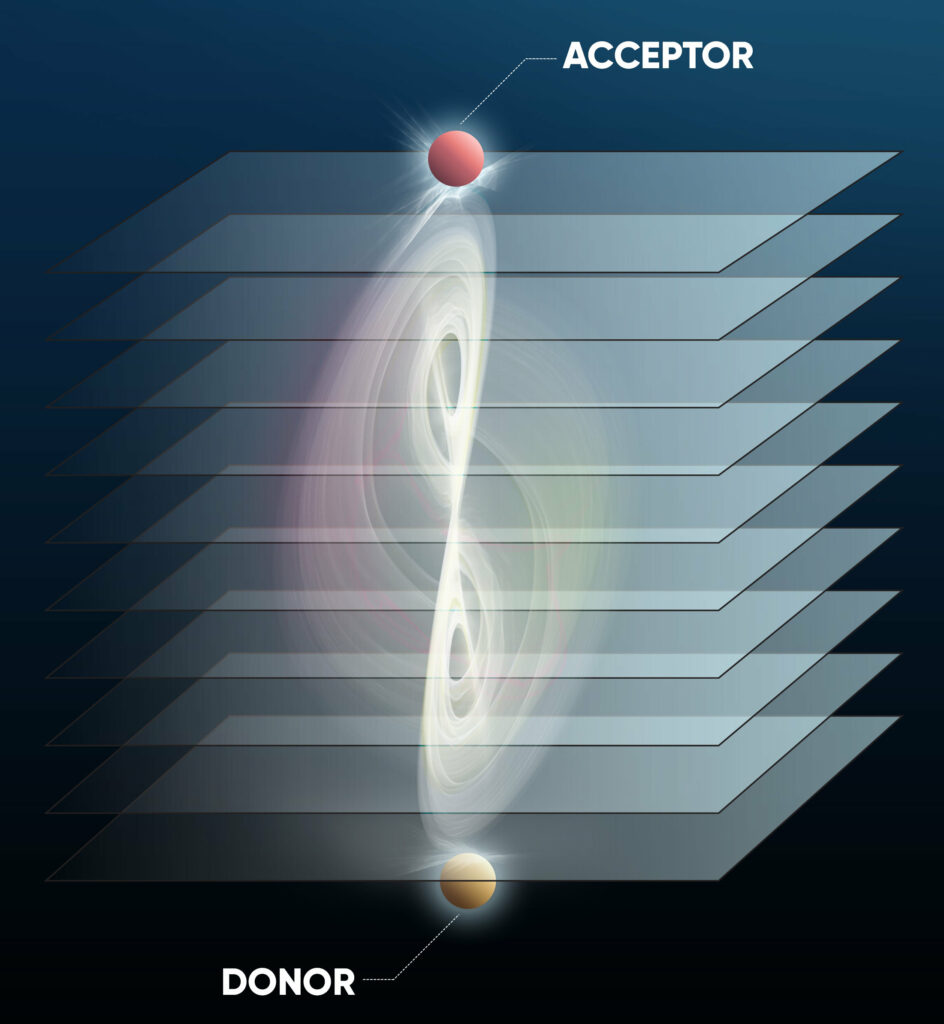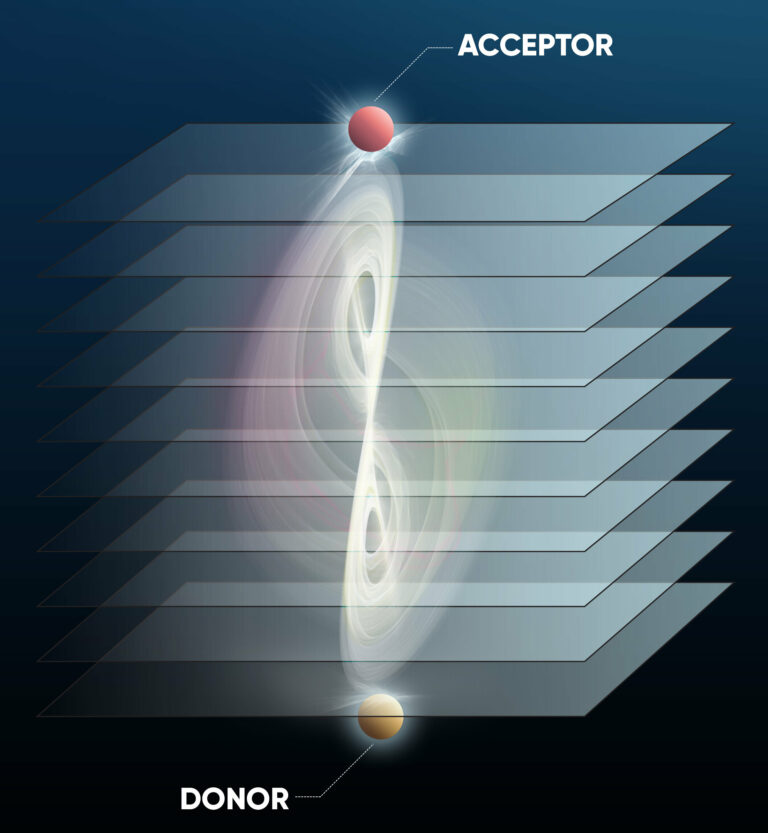Collaborative Research Overcomes Forster Resonant Energy Transfer (FRET) Distance Constraints.
A research team led by City College of New York has made a groundbreaking discovery in the field of energy transfer between molecules. By utilizing engineered nanocomposite structures known as metamaterials, the team has successfully measured a significant increase in the distance over which energy transfer occurs. This breakthrough surpasses the Förster resonance energy transfer (FRET) distance limit of approximately 10-20 nanometers and opens up the possibility of measuring larger molecular assemblies.
The findings, published in the journal ACS Photonics, have significant implications for various fields, particularly in pharmaceuticals. FRET is a widely used technique in biological and biophysical research, and this new development could greatly benefit these areas.

Vinod Menon, a professor of physics in City College’s Division of Science, explained the importance of energy transfer between molecules, stating that it plays a crucial role in phenomena like photosynthesis and serves as a spectroscopic ruler for identifying structural changes in molecules. However, the distance over which energy transfer typically occurs is limited to 10 to 20 nm.
In their study, Menon’s research group demonstrated a remarkable increase in the energy transfer distance, exceeding 15 times the previous limit and reaching approximately 160 nm. This achievement was made possible by utilizing a metamaterial that undergoes a topological transition.
This research paves the way for the use of spectroscopic rulers in studying a wide range of larger molecular systems, which was previously not feasible using the standard FRET technique.
This article is republished from PhysORG under a Creative Commons license. Read the original article.
Do not forget to share your opinion with us to provide you with the best posts !




0 Comments